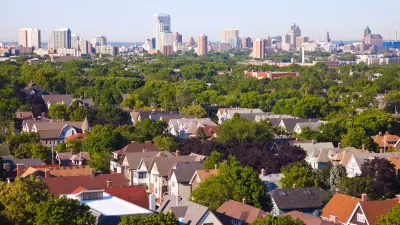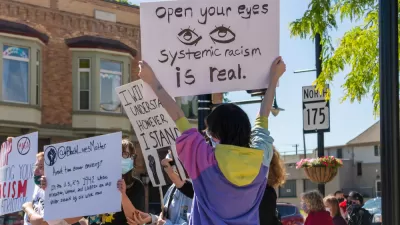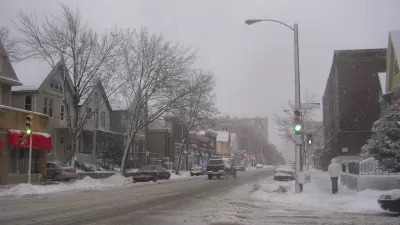The city has plans to increase affordable housing, but some areas are seeing more progress than others.

Susan Nusser reports that Milwaukee’s attempts to deal with a lack of affordable housing is falling short of original goals. Earlier this year, Mayor Tom Barrett presented a plan to build or improve 10,000 units in the next decade. But while development in downtown is bringing a slew of luxury units to the city, progress on the affordable housing front is still lagging, says Nusser.
An issue complicating affordable housing efforts is the concentrations of poverty and foreclosures that resulted from the housing crisis a decade ago. Milwaukee is not alone in facing this challenge, says Nusser:
One of the problems facing cities like Milwaukee—former manufacturing cities that have suffered severe population drops after de-industrialization—are the pockets of concentrated poverty that fail to improve even as other areas recover. As the desirable neighborhoods rebuild after the recession, impoverished ones slip further behind, and deep income disparities result.
This hypervacancy perpetuates a cycle where neighborhoods deteriorate and some people are able to move away while others are forced to stay.
Community advocates say that broader strategies, rather than ones that focus on just on housing policies and programs, are needed to turn these neighborhoods around, keep residents, and attract new ones. “Neighborhood residents are interested in developing cooperative housing and land grants that would give the community some authority over board-ups and vacant lots,” says Nusser.
FULL STORY: Can Milwaukee Really Create 10,000 Affordable Homes?

Planetizen Federal Action Tracker
A weekly monitor of how Trump’s orders and actions are impacting planners and planning in America.

Maui's Vacation Rental Debate Turns Ugly
Verbal attacks, misinformation campaigns and fistfights plague a high-stakes debate to convert thousands of vacation rentals into long-term housing.

Restaurant Patios Were a Pandemic Win — Why Were They so Hard to Keep?
Social distancing requirements and changes in travel patterns prompted cities to pilot new uses for street and sidewalk space. Then it got complicated.

In California Battle of Housing vs. Environment, Housing Just Won
A new state law significantly limits the power of CEQA, an environmental review law that served as a powerful tool for blocking new development.

Boulder Eliminates Parking Minimums Citywide
Officials estimate the cost of building a single underground parking space at up to $100,000.

Orange County, Florida Adopts Largest US “Sprawl Repair” Code
The ‘Orange Code’ seeks to rectify decades of sprawl-inducing, car-oriented development.
Urban Design for Planners 1: Software Tools
This six-course series explores essential urban design concepts using open source software and equips planners with the tools they need to participate fully in the urban design process.
Planning for Universal Design
Learn the tools for implementing Universal Design in planning regulations.
Heyer Gruel & Associates PA
JM Goldson LLC
Custer County Colorado
City of Camden Redevelopment Agency
City of Astoria
Transportation Research & Education Center (TREC) at Portland State University
Jefferson Parish Government
Camden Redevelopment Agency
City of Claremont





























